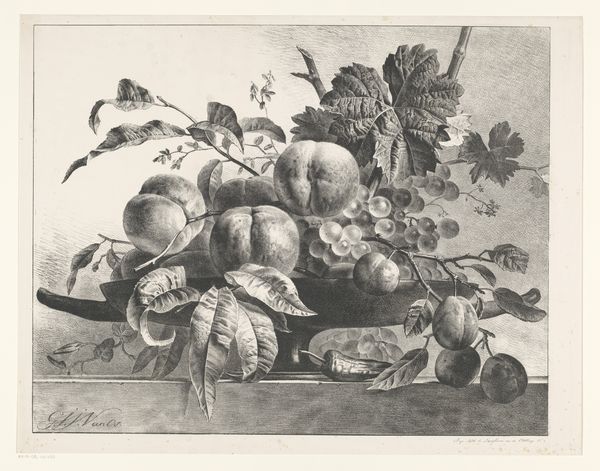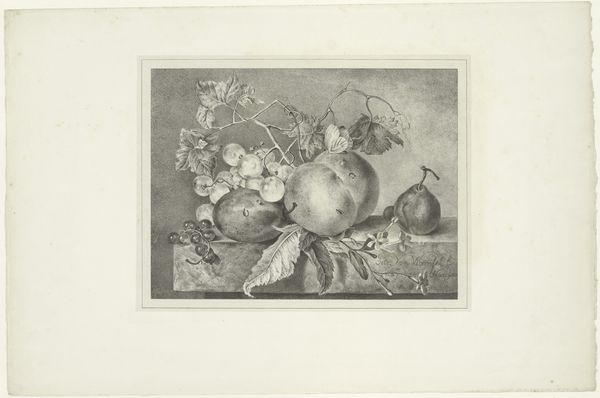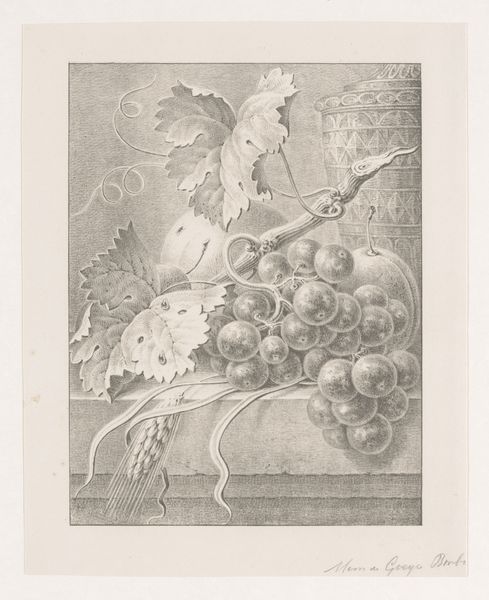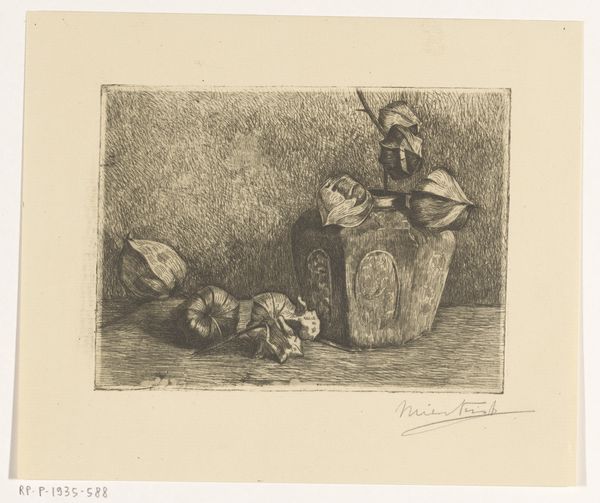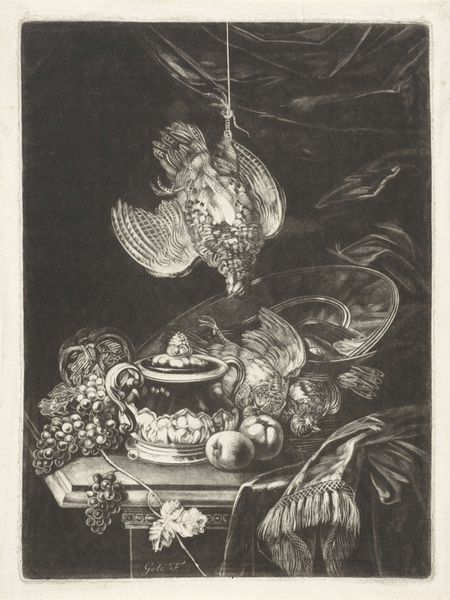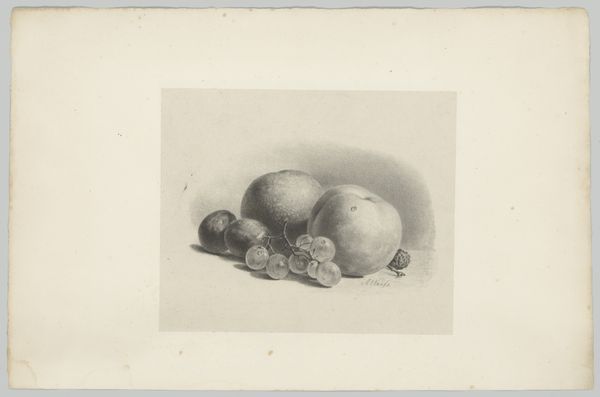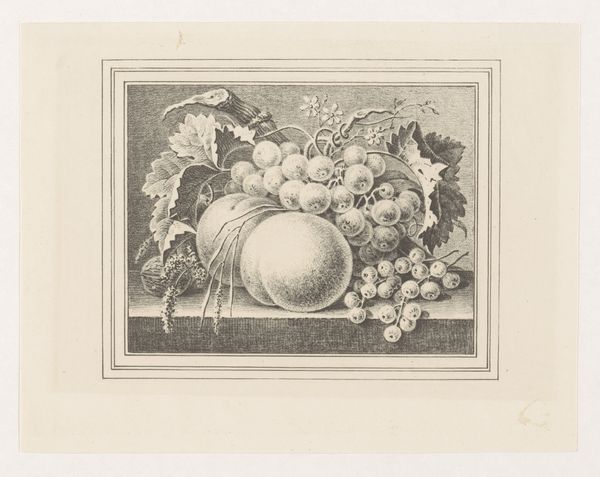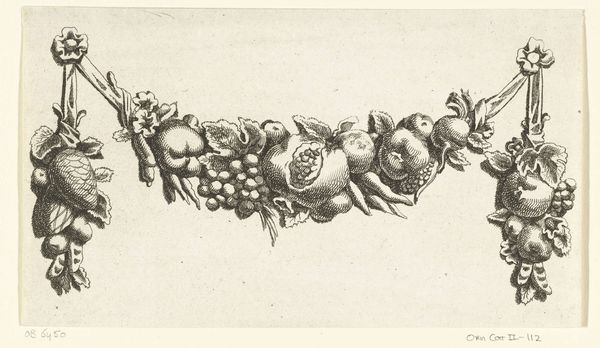
print, glass, engraving
# print
#
glass
#
fruit
#
engraving
Dimensions: height 173 mm, width 232 mm
Copyright: Rijks Museum: Open Domain
Editor: We’re looking at "Stilleven met vruchten en oesters," or "Still Life with Fruits and Oysters," an engraving from 1787 by J.L.L.C. Zentner. The textures created through engraving are captivating – the almost photographic detail, especially on the glass. How do you approach analyzing such a detailed, black and white composition? Curator: The immediate observation leads to the masterful interplay of light and shadow. Zentner creates depth solely through tonal variations. The composition adheres to a pyramidical structure, stabilizing the arrangement. Note the textures—the stark contrast between the smoothness of the glass and the roughness of the oyster shells—each contributing to the piece's overall tactile quality. How do you perceive the use of empty space? Editor: I see that the blank background accentuates the details and the shading that sculpts the forms of the fruits and objects, but also creates an odd kind of tension with the busyness of the items displayed so close to each other. What do you think of the positioning? Curator: Precisely. The shallow depth pushes the objects forward, demanding close visual attention. There is a formal ambiguity in the work between implied depth and flatness. Do you perceive any geometric tension between these elements, perhaps semiotic cues, to draw your eye in a certain direction? Editor: The artist repeats circular shapes – the fruit, oysters, the rim of the glass – which creates a sense of rhythm. That, coupled with the detail, makes it hard to stop looking. Curator: Indeed, this carefully constructed visual field invites continuous decoding of forms and textures. Zentner’s calculated rendering showcases the capacity for engraving to create captivating visual tension, achieved simply through an emphasis on the formal language present within the composition itself. Editor: I see the point now. By focusing on how the elements are arranged and rendered, we can discover so much. Thanks!
Comments
No comments
Be the first to comment and join the conversation on the ultimate creative platform.
